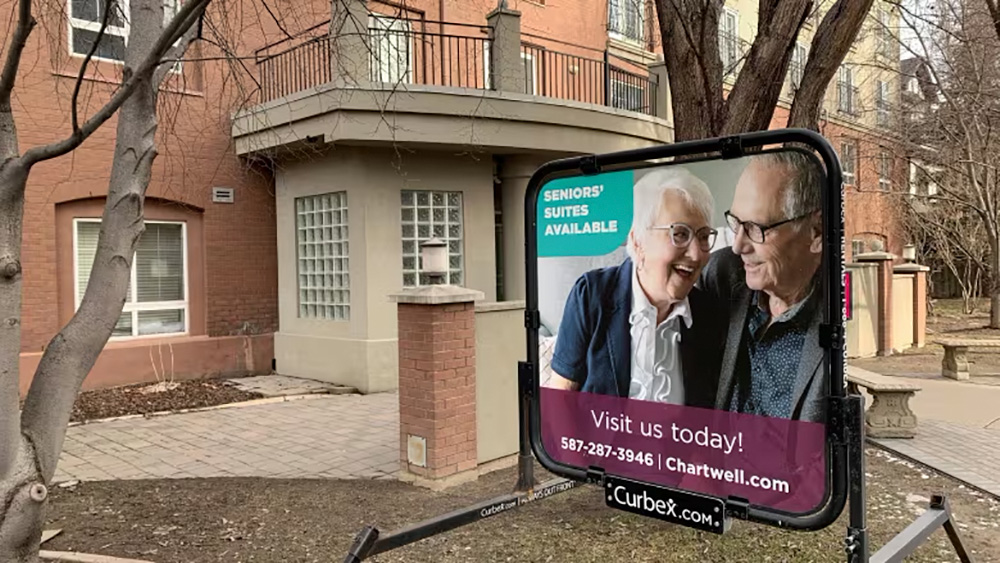As thousands of people struggle with the limited rental space in Alberta’s rental market, one form of housing reportedly has spaces to spare.
Retirement homes.
With the baby boomer generation between the ages of 60 and 80, you’d think ‘retirement’ spaces would be full to the brim.
Yet, the average senior home in Alberta reportedly has a quarter of its rooms sitting vacant!
There are many reasons behind the lack of ‘eligible’ candidates filling these rooms.
For some, privacy and dignity are factors.
For others, there is the stigma that retirement homes are ‘old folks homes,’ and many seniors simply feel they don’t belong there.
Others are afraid to live in group situations because of post-COVID fears or can’t afford the higher costs of retirement homes.
The most interesting thing about these vacancy numbers is that while rooms are empty, thousands of seniors are also sitting on waitlists for affordable communal housing.
What gives?


A World Apart
People’s views on aging have significantly changed in the Western world over the last hundred years.
Traditionally, elders were revered for their wisdom, experience, and role in the community.
However, as society has evolved, the value we place on individuals has increasingly become tied to their productivity and role in the workforce.
Erdman Palmore, a gerontologist with extensive experience studying aging within Western cultures, emphasizes this change in his study, “Awakening Canadians to Ageism.”
According to Palmore, “Ageism is a “virus” ingrained into cultures, so pervasive that even older people have negative stereotypes of aging.”
Society’s focus on youth has contributed to deeper generational divisions, reducing interactions and friendships between the young and the old.


Safe Havens?
While intended to be safe havens, senior living facilities are sometimes perceived negatively—as places where older people are tucked away and forgotten.


Although these homes can provide a nurturing environment, they are also associated with a loss of independence.
Moreover, there is a growing concern about the potential for neglect, mistreatment, or abuse within these settings.
According to research gathered through the Department of Justice Canada (2023), nearly half of seniors report experiencing some form of abuse from the age of 65 on.
Abuse is not necessarily always committed in nursing homes, but when it does happen, it leaves a dark stain on the facility.
Ruth Adria, chair of the Elder Advocates of Alberta Society, told High River Online, “You have to recognize that there are very diligent, compassionate caregivers.”
However, poor training, burn-out and, in some cases, neglectful behaviour on the part of some caretakers take their toll on the quality of life of some senior residents.
“They will be mistreated, they will be ostracized, their family will be dealt with also. Often, there’s the threat of “Look, if you don’t like it here, you can go somewhere else,” she said.


Adria says facility issues are often suppressed because residents and their families fear what may happen if they complain.
“This is a big issue across the country and certainly in Alberta. If people do speak out, they’re banned from visiting the facility.”
While there are few stats on these kinds of claims, the idea of it happening is enough to discourage many seniors from taking up residence.
Dorothy Bagan is 75 years old and has lived in a home in Calgary for 42 years.
She told CBC News that moving to a retirement residence is far from appealing.
“Absolutely not. I don’t want to live with seniors. Seniors are wonderful. I’m a senior, but I need the diversity of young people and children. That gives me a vitality that I love,” said Bagan.
“I have kids on the block that come and visit and say, ‘Hi, Dot.’”
This kind of community used to be the norm, and it is still something that most people enjoy – senior or otherwise.
The Opposite of Herd Immunity
Since the onset of the pandemic, a new fear has emerged among those considering moving into senior living facilities.
The rapid spread of COVID-19 within senior residences resulted in numerous fatal cases, heightening concerns.
To prevent the virus from spreading, many facilities enforced strict no-visitation policies.
While these measures were crucial for physical health, the resulting isolation severely impacted the mental well-being of residents, creating a new set of worries for anyone thinking about moving into a retirement residence.
“The reason for not doing more to prevent COVID-19 appears to be ageism, plain and simple,” said Dawn ME Bowdish, Canada Research Chair in Aging & Immunity at McMaster University.
“There is no logical explanation for accepting an unnatural degree of hospitalization and premature deaths in elders except that we value the lives of younger people more,” she continued.
As long as COVID and other contagious diseases pose a threat, living in a group scenario will remain a risk and a concern for seniors.
The Affordability Problem
Despite these potential downsides and worst-case scenarios – if a rental community is well-equipped, open, lively, and has good safety protocols, seniors will want to live there.


The main issue keeping these rooms vacant is that they are too darn expensive.
In Alberta, living in residence averages between $3,270 and $6,000/month.
It’s obvious why these prices would be a hurdle for most people on a fixed pension.
The best facilities have the most expensive monthly rates, and because of this, they often have the most rooms available.
However, while the more “luxurious” retirement spaces have room to spare, the “affordable” senior housing options have mile-long wait lists.
Larry Mathieson, CEO of Unison for Generations 50+, which runs the Kerby Centre in Calgary, told CBC News that older people, not just young people, face dire financial situations due to the cost of housing.
“Most of the organizations we’re working with that have lower-cost seniors housing, there’s a six to eight-month waiting list,” he said.
So what is the solution retirement spaces are coming up with to fill vacant rooms?
Hint: They’re not being provided at a cost seniors in need can afford.
The Best Intentions
Bonita Paquette, founder of the Canadian Alliance for Intergenerational Living, has an idea for the rooms that come from the best intentions.
“I thought, well, why wouldn’t you match students with seniors that have rooms in these homes?” she told CBC News.
The Calgary-based organization is piloting a program for two post-secondary students to live in a retirement home.
Paquette said they’ll pay “cheap” rent in exchange for spending 30 hours a month socializing with seniors, said Paquette.
“I think it’s good for both the students and the seniors. They both have different perspectives in life.… And they can learn from each other,” she said.
Intergenerational living is undoubtedly beneficial for all parties involved. However, the details of this plan feel a tad exploitative.
Thirty hours, paid at a living wage of $25 an hour, is worth $750 monthly.
So unless the students benefit from a $750 reduction from their ‘cheaper rental,’ the facility is just gaining some ‘free labour.’
Having residents of mixed age is beneficial for sure but at the cost of some seniors missing out on a place to live?
Wouldn’t it be better to subsidize the vacant rooms to senior residents genuinely in need at a base price?
A financial needs test would need to be conducted for those seniors given the lower rate, but in the end, it would still generate more funds for the facility than leaving rooms empty.
Housing is a problem across all generations, and more work needs to be done to create more intergenerational communities in Alberta, but not in an exploitative manner or in a manner that reduces the dignity of all involved.








